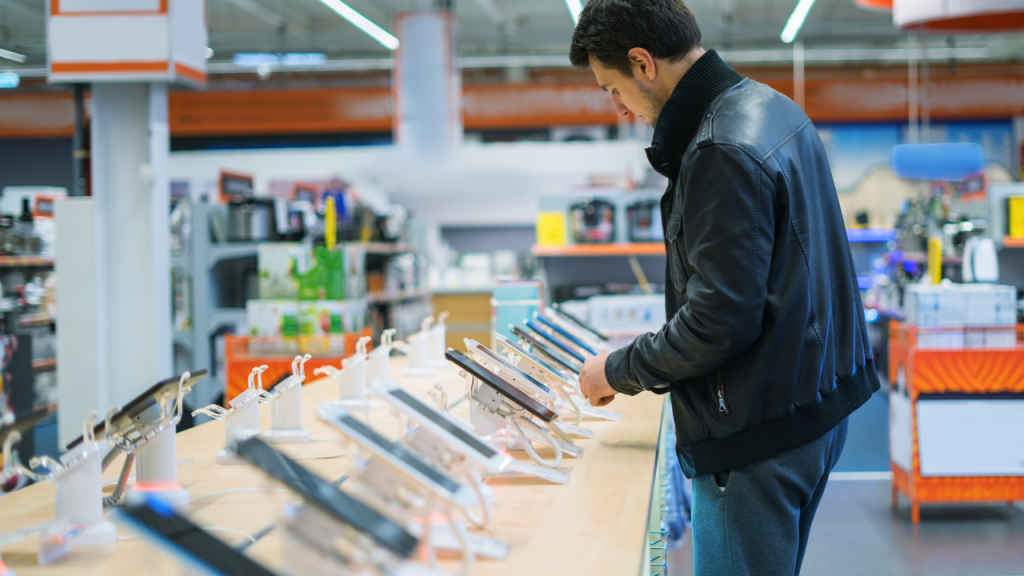India’s refurbished gadget market: Growth, challenges, and future prospects

The refurbished gadget market in India has undergone significant transformation over the past few years, according to various reports. With increasing consumer awareness and shifting economic factors, this sector is poised for both opportunities and challenges.
 Survey
SurveyAlso read: India’s refurbished smartphone market booming: Flipkart’s Recommerce Business Head
In order to gain a deeper understanding of this evolving landscape, I spoke with Glen Cardoza, Senior Research Analyst, Smartphone Ecosystem at Counterpoint Research. He provides valuable insights into the market’s growth trajectory, dominant product categories, the role of AI, and the impact of government policies.
Q) How has the refurbished gadget market in India evolved and what factors are driving its growth?
The Indian refurbished market had a steady growth rate until 2019 and then it witnessed a spike. The COVID situation and resultant economic decline forced many consumers to consider refurbished. Awareness increased and players started providing quality devices which improved the trust in second-hand devices. While 2020-23 saw impressive growth for the secondary markets in India, 2024-26 might see limited growth for this sector as the market is now getting crowded.

Q) What is the market share distribution among organised and unorganised players in the Indian refurbished gadget market?
The unorganised refurbished smartphone market makes up about 82% of the overall industry in India. The organised retail players like Cashify, Refit, HXcart and even e-platforms like Amazon are trying to assimilate volumes from the unorganised sector into their value chain but this will take time.
Q) Which product categories (smartphones, laptops, etc.) dominate the refurbished market in India? How is the demand for different product categories evolving?
Smartphones are the most collected and resold consumer devices in the secondary market. The demand is highest for smartphones as it has become a necessity to most consumers. They are smaller, easier to stock and distribute. Hence, they get traded more often between businesses. Even though refurbishment players might deal with phones, laptops, hearables, wearables and many other categories, smartphones make up the largest category. In India, refurbished laptops witnessed a spike during and post Covid (2020-22) but this demand is slowing down now.
Q) How can AI be leveraged to build consumer trust in refurbished products?
AI is currently being used in processes like data erasure, quality check, testing and grading processes by relatively big diagnostic players in the west. A select few businesses are using it in India as well. Overall cosmetic and functional checks can identify defects. Utilisation of AI is still in nascent stages when it comes to overall end-to-end diagnostics in India but as volumes increase, organised businesses are not only using AI as a part of their operations but also marketing its usefulness to increase consumer trust.
Also read: “Sustainability is the driving force shaping the future of technology”, says ControlZ’s Yug Bhatia
Big global players who specialise in trading refurbished smartphones across markets have seen AI’s benefits. In India, as volumes increase, the efficiency and accuracy will increase.
Q) How do you see government policies and regulations influencing the growth of the refurbished gadget market in India?
Over the last few years, the government’s initiatives towards refurbished devices are mostly aimed towards welfare of consumers. The government is trying to reduce parallel imports, restrict counterfeit phones and components while making sure that IMEI numbers are being registered properly. These are mostly consumer-centric initiatives.

Import of used or refurbished devices are still highly restricted in India and so supply needs to be sourced domestically. The secondary markets need some policy level changes to not only make it easier to do business but also, make standards and guidelines for industry players to grow the market in a sustainable manner. This will tie in perfectly with circular economy objectives as well.
As India’s refurbished gadget market continues to mature, it presents a complex mix of opportunities and hurdles, believes Cardoza. The dominance of smartphones in this sector underscores the essential nature of these devices in modern life. While AI has the potential to revolutionise quality assurance and build consumer trust, its adoption remains in the early stages within India.
Government policies play a crucial role in shaping the industry’s future, with a need for more supportive regulations to foster sustainable growth. The insights provided by Glen Cardoza highlight the importance of strategic planning and collaboration among stakeholders to navigate this evolving landscape successfully.
Also read: Embracing refurbished gadgets: NewJaisa’s journey in India’s second-hand tech market
Jayesh Shinde
Executive Editor at Digit. Technology journalist since Jan 2008, with stints at Indiatimes.com and PCWorld.in. Enthusiastic dad, reluctant traveler, weekend gamer, LOTR nerd, pseudo bon vivant. View Full Profile